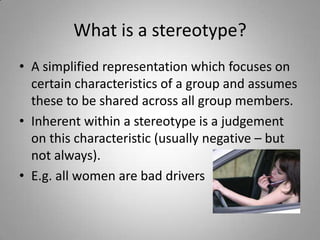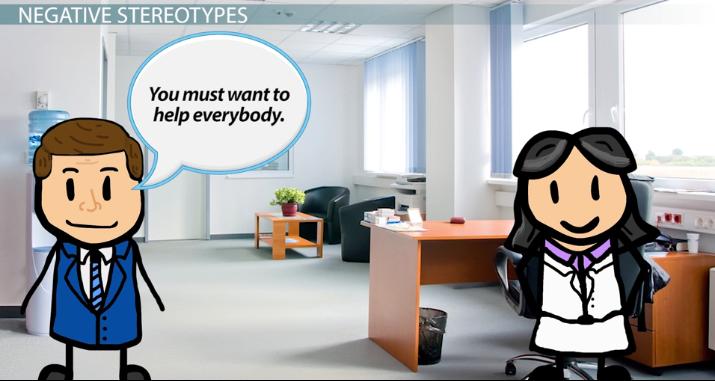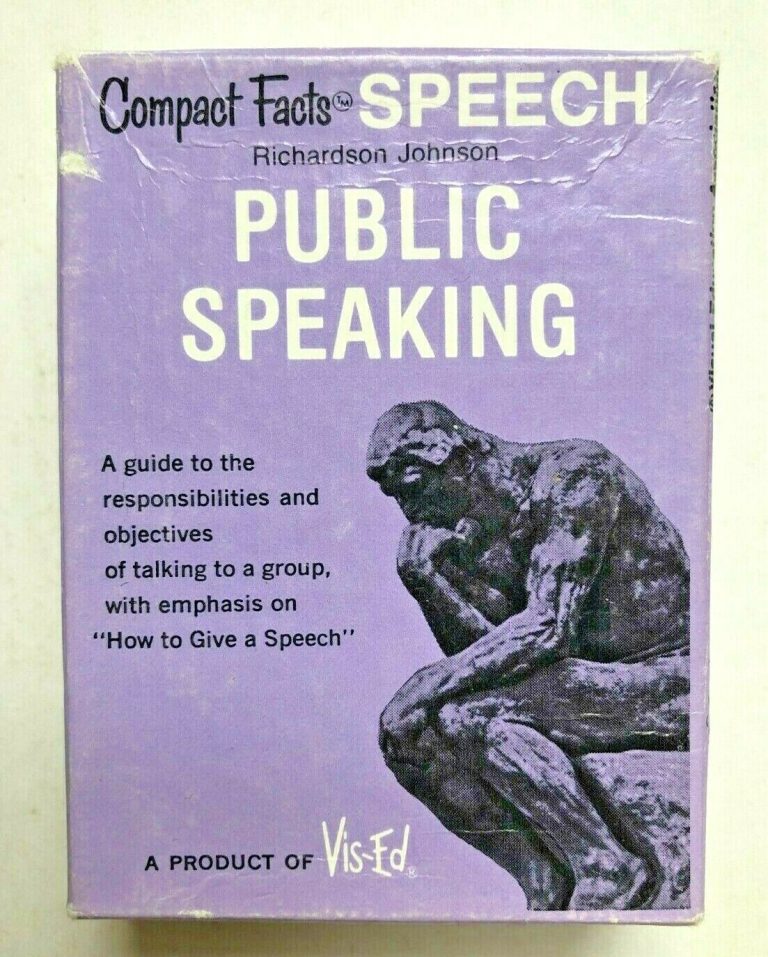What is Stereotyping in Communication?
Stereotyping in communication is the process of making generalizations or assumptions about a group based on preconceived notions or beliefs, which can hinder effective and accurate communication. It is important to be mindful and avoid stereotypes in order to promote understanding and fairness in communication.
When individuals engage in communication, they often rely on stereotypes to categorize and make sense of the world around them. However, these stereotypes can be misleading and lead to misunderstandings or biased perceptions. Stereotyping in communication occurs when individuals make assumptions or generalizations about others based on their race, gender, age, religion, or other characteristics.
This can result in miscommunication, unfair judgments, and perpetuation of biases. By recognizing and challenging stereotypes, individuals can foster more inclusive, respectful, and effective communication. We will explore the impact of stereotyping in communication and provide tips for avoiding or addressing stereotypes in conversations.
Defining Stereotypes In Communication
Stereotyping in communication refers to the act of categorizing individuals based on preconceived notions. Stereotypes serve as mental shortcuts that allow us to quickly categorize and make judgments about others. They are often formed through societal influences, personal experiences, and cultural biases.
In communication, stereotypes can have a significant impact, shaping how we perceive and interact with others. They can lead to misunderstandings, prejudice, and discrimination. Stereotypes can limit our ability to see individuals as unique and complex, instead reducing them to simplistic and often inaccurate representations.
It is important to recognize and challenge stereotypes in communication to foster understanding, respect, and inclusivity. By transcending stereotypes, we can create more meaningful and authentic connections with others, promoting effective communication and mutual appreciation.

Credit: www.slideshare.net
How Stereotypes Affect Communication
Stereotyping in communication refers to the process of generalizing individuals based on certain characteristics or traits. These stereotypes can have a significant impact on the way people communicate with each other. Stereotypes affect communication by shaping our perception of others.
When we see someone fitting into a particular stereotype, we may make assumptions about their personality, abilities, or intentions. Nonverbal communication is also influenced by stereotypes. Our body language, gestures, and facial expressions may inadvertently reinforce stereotypes or be misinterpreted due to preconceived notions.
Similarly, stereotypes can influence our verbal communication, leading to biased judgments or the use of prejudiced language. It is important to be aware of these stereotypes and challenge them in order to foster effective and inclusive communication. By actively questioning our assumptions and treating each individual as unique, we can enhance our understanding and create a more open and respectful communication environment.
Challenging Stereotypes In Communication
Stereotyping in communication can be challenged by recognizing personal biases and stereotypes. It is important to promote open-mindedness and cultural understanding. By overcoming stereotypes in interpersonal communication, we can foster better connections and avoid misinterpretation. One way to address this is by actively listening and being aware of our own preconceived notions.
Engaging in respectful dialogue and valuing diverse perspectives can help break down barriers and foster empathy. It is crucial to approach every interaction with an open mind, acknowledging that each person is unique and should not be generalized based on stereotypes.
By doing so, we can create a more inclusive and understanding communication environment that celebrates diversity.
Stereotypes In Media Representation
Stereotyping in communication refers to the act of generalizing and categorizing individuals based on their traits or characteristics. Media plays a significant role in shaping these stereotypes and perpetuating prejudice in society. Through various forms of media, such as movies, television shows, and advertisements, certain groups are often portrayed in a biased and limited manner.
These portrayals can lead to misunderstandings, misconceptions, and reinforce negative preconceived notions about certain individuals or communities. It is essential to challenge these stereotypes and encourage a more accurate and inclusive representation of diverse groups in the media. By doing so, we can promote understanding, empathy, and break the cycle of prejudice and discrimination in society.
Stereotyping In Workplace Communication
Stereotyping in workplace communication can have a significant impact on teamwork and collaboration. Stereotypes, which are generalizations or assumptions made about individuals based on their gender, race, age, or other characteristics, can create a divisive and hostile environment. They can lead to misunderstandings, miscommunication, and a lack of trust among team members.
Overcoming stereotypes requires implementing strategies that promote inclusivity and diversity. This can include fostering an open and respectful work culture, providing diversity training and education, encouraging open dialogue, and promoting empathy and understanding. By addressing stereotypes in the workplace, organizations can create a more inclusive and collaborative environment where all team members feel valued and are able to contribute their unique perspectives and skills.
Stereotyping In Intercultural Communication
Stereotyping in intercultural communication refers to the assumptions and generalizations made about individuals based on their cultural background. These stereotypes can lead to misunderstandings and hinder effective communication between people from different cultures. Cultural stereotypes often arise from limited knowledge or exposure to a particular culture, leading to biases and preconceived notions.
However, it is crucial to break down these stereotypes and build bridges in intercultural communication. By challenging our assumptions, actively seeking to understand different cultures, and promoting open dialogue, we can foster better understanding and appreciation for diversity. This helps in creating a more inclusive and harmonious society where stereotypes are replaced with genuine connections and mutual respect.
Communication plays a vital role in addressing stereotyping and promoting cultural understanding.
Empathy And Perspective-Taking
Stereotyping in communication refers to making assumptions based on generalizations rather than individual characteristics. Empathy plays a crucial role in challenging and breaking down these stereotypes. By empathizing, individuals gain a deeper understanding of others’ experiences and perspectives, helping them to recognize the limitations and inaccuracies of stereotypes.
This empathy allows for more effective communication as it encourages individuals to approach conversations with openness and a willingness to learn from others. Perspective-taking is an important aspect of developing empathy in communication. It involves putting oneself in another person’s shoes and considering their thoughts, feelings, and experiences.
By cultivating perspective-taking skills, individuals can challenge their own biases, reframe their understanding of stereotypes, and engage in more holistic and respectful conversations. Taking this approach helps create a more inclusive and harmonious society where communication is based on genuine understanding, rather than preconceived notions.
Education And Awareness
Education plays a critical role in combating stereotypes by raising awareness about their dangers. By educating people, we can promote a more inclusive and empathetic society. When individuals understand the negative impact of stereotypes, they are more likely to challenge and reject them.
Through education, we can encourage critical thinking and teach individuals to question preconceived notions. By providing accurate information and promoting diverse perspectives, education empowers individuals to form their own opinions. It enables them to recognize the complexity and diversity of the world around them.
Education also encourages empathy and understanding, allowing individuals to put themselves in the shoes of others and challenge stereotypes. By promoting education and awareness, we can work towards eliminating stereotypes and creating a more inclusive society.
Creating Inclusive Communication Environments
Stereotyping in communication occurs when individuals rely on preconceived notions and generalizations to interpret and judge others. Creating inclusive communication environments involves fostering inclusivity in organizations and communities. Strategies for promoting diversity and reducing stereotypes in communication can include actively promoting cultural awareness and sensitivity, encouraging open and respectful dialogue, providing diversity training, and implementing inclusive language policies.
By embracing diversity and challenging stereotypes, organizations and communities can ensure that their communication is inclusive and respectful for all individuals. This creates an environment where everyone feels valued and heard, resulting in better collaboration, understanding, and productivity. Such efforts contribute to breaking down barriers and promoting a more inclusive and equitable society.
Frequently Asked Questions Of What Is Stereotyping In Communication
What Do You Mean By Stereotyping In Communication?
Stereotyping in communication refers to making generalizations about a group of people based on preconceived notions or beliefs. It involves assuming that all individuals within a particular group possess similar characteristics or traits. This can lead to biased judgements and unfair treatment of others.
Stereotyping often occurs due to cultural, racial, or gender differences. It can hinder effective communication by presupposing certain characteristics or opinions without allowing individuals to express themselves authentically. Stereotyping can perpetuate negative stereotypes, reinforce prejudices, and result in misunderstandings. To mitigate the impact of stereotyping in communication, it is important to be aware of our own biases, question assumptions, and treat each person as an individual with their own unique experiences and perspectives.
By promoting open-mindedness and inclusivity, we can foster better communication and understanding.
What Is An Example Of Stereotyping When Communicating?
Using derogatory language or assuming certain characteristics based on someone’s gender, race, or nationality can be examples of stereotyping in communication.
What Is A Stereotyping Simple Definition?
Stereotyping means forming an oversimplified and generalized belief about a group based on their characteristics. It involves assuming that all individuals within that group have the same traits or behaviors. Stereotypes often involve preconceived notions about race, gender, religion, or other social categories.
They can be based on cultural biases or personal experiences. Stereotyping simplifies complex realities and can lead to unfair judgments and discrimination. It is important to challenge and avoid stereotyping to promote understanding and equality among diverse groups.
What Is An Example Of A Stereotyping Barrier?
A common example of a stereotyping barrier is assuming that all members of a certain group possess the same traits or characteristics. Stereotypes can create misconceptions and prejudices, hindering effective communication and understanding between individuals or groups. For instance, assuming that all women are emotional or weak, or that all men are aggressive or dominant, can impede equal opportunities and perpetuate gender inequality.
Stereotypes can also affect racial or ethnic groups, such as assuming that all Asians are good at math or that all African Americans are athletic. Breaking down these stereotypes is crucial for fostering inclusivity and promoting fair treatment. By recognizing and challenging our own biases, we can overcome stereotyping barriers and promote a more diverse and accepting society.
Conclusion
Stereotyping in communication is a prevalent issue that can hinder effective understanding and connections between individuals. It involves making assumptions based on generalizations, leading to unfair biases and misunderstandings. By recognizing the impact of stereotypes, we can work towards breaking down these barriers and promoting better communication.
It is crucial to approach conversations with an open mind, free from preconceived notions. By actively listening and engaging in empathy, we can challenge and change our own biases and encourage others to do the same. Through education and awareness, we can foster a more inclusive and accepting society where individuals are seen and understood for who they truly are.
By advocating for diverse perspectives and embracing differences, we can create an environment that celebrates uniqueness and promotes effective communication. Working towards a stereotype-free world is a collective effort, but one that is essential for fostering understanding, respect, and genuine connections with one another.




